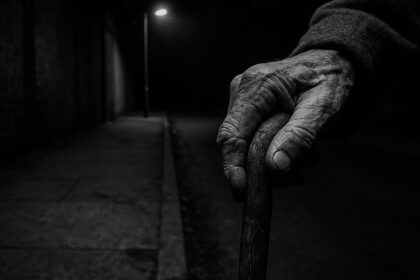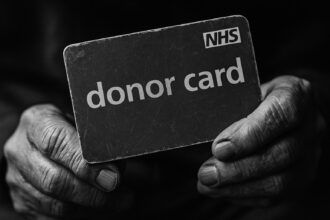Nathan Ruth, convicted for plotting an attack on the Isle of Wight Festival and violently attacking prison staff, is transferred to a mental health facility designed for rehabilitation. Staff express concern over safety and the adequacy of current measures in managing such a high-risk individual.
A teenage convert to Islam, Nathan Ruth, has been at the centre of a troubling narrative as he transitions from a young offender’s institution to a mental health facility, igniting fierce debate about the safety of both staff and society. Ruth, who was sentenced to seven years in 2024 for plotting a terrorist attack at the Isle of Wight Festival, has gained notoriety not just for his plans—focusing on potential victims he believed had insulted his faith—but also for the violence he perpetrated against prison officers while in custody.
At just 15 years old, Ruth meticulously researched weapons, vehicles, and ways to execute his attack. His preparations included detailed plans involving fast lorries and bladed articles, underscoring the serious nature of his intentions. These plans were thwarted in July 2022 after the FBI tipped off UK authorities. Despite these alarming indicators, Ruth’s aggressive behaviour continued even after his conviction; reports indicate he stabbed ten officers during his time at Feltham Young Offenders Institution, leveraging makeshift weapons to inflict injury. He had attacked staff on 18 separate occasions, a chilling testament to his propensity for violence.
Following assessments of his mental health, Ruth was transferred to Bluebird House, a facility in Hampshire designed to offer a therapeutic environment for young people. According to its promotional material, the centre emphasises a “friendly and welcoming” atmosphere where patients are encouraged to engage in various recreational activities, including sports and film nights. However, this transition has raised concerns among prison staff and security personnel, who feel that the nature of the facility—often described as resembling a “five-star hotel”—may not adequately address the risks posed by such a violent individual.
Reports from within the prison system depict a climate of disbelief and frustration. Guards, who previously donned full riot gear to safely manage Ruth’s movements, express alarm at what they consider a miscarriage of justice. Sources suggest that Ruth has manipulated the system to secure a more comfortable living situation, seemingly relishing the attention and the relative luxury of his new environment. His alleged boast that he will “see us on the news one day” has added to concerns about his state of mind and ongoing risk to others.
The case not only highlights the complexities surrounding rehabilitation for young offenders but also raises pressing questions about how to manage individuals who pose a significant threat to public safety. The Ministry of Justice has stated that prisoners can be transferred for mental health treatment based on expert assessments, affirming their commitment to rehabilitative practices. Yet, critics argue that such measures must be tempered with stringent safeguards to protect staff and the wider community from individuals like Ruth, whose histories of violence and threats cannot be overlooked.
As Britain grapples with rising extremism, including notable incidents of militant attacks in recent years, this case serves as a stark reminder of the myriad challenges facing law enforcement and mental health services alike. The balancing act between rehabilitation for troubled youth and the imperative of public safety remains a contentious arena, particularly when dealing with those whose actions can have far-reaching implications.
Ultimately, as Nathan Ruth embarks on a new chapter in a mental health facility, both his future and the safety of those around him remain precariously poised. With an ever-watchful eye on radicalisation and its impacts, the discourse surrounding his case will likely continue to unfold amidst broader societal concerns.
Reference Map:
Source: Noah Wire Services
- https://www.dailymail.co.uk/news/article-14770457/Teenage-Muslim-convert-plotted-Isle-Wight-Festival-terror-attack-knifed-TEN-prison-officers-jailed-named-time.html?ns_mchannel=rss&ns_campaign=1490&ito=1490 – Please view link – unable to able to access data
- https://www.reuters.com/world/uk/teenager-detained-plotting-terrorist-attack-uk-music-festival-2024-04-15/ – A British teenager was sentenced to seven years’ detention for planning a terrorist attack on the Isle of Wight music festival. The 16-year-old, who had converted to Islam, researched weapons and vehicles, and considered using a knife. He was arrested in July 2022 after the FBI tipped off UK authorities. The case highlights concerns over the exploitation of vulnerable individuals by terrorist groups. Prime Minister Rishi Sunak called for a tougher approach to policing protests amid rising extremism. Britain has faced several militant attacks in recent years, including the 2017 Manchester bombing.
- https://www.bbc.com/news/uk-england-hampshire-68817431 – A 16-year-old boy was jailed for seven years for plotting a terror attack after researching the Isle of Wight Festival as a potential target. The teenager from Cowes, who cannot be named for legal reasons, was planning to attack people he believed had insulted Islam. He also shared terrorist publications with others. He was found guilty of preparation of terrorist acts at Kingston Crown Court. The jury also found him guilty of three counts of dissemination of terrorist publications and having a bladed article in a public place.
- https://www.countypress.co.uk/news/24098992.isle-wight-festival-terror-teen-trial-concludes/ – The trial of a teenage boy from the Isle of Wight, who was found guilty of plotting a terror attack at the Isle of Wight Festival, has concluded. The jury found the boy, who cannot be named for legal reasons, guilty of three counts of the dissemination of terrorist publications, engaging in conduct in the preparation of terrorist acts, and possession of a bladed article in a public place. The offences took place in 2022, between June 18 and July 11, the day the defendant was arrested. He was planning to attack people he believed had insulted Islam and was found with a knife in his possession when he was detained.
- https://www.islandecho.co.uk/teen-who-plotted-isle-of-wight-terror-attacks-found-guilty-by-jury-4/ – A teenage boy from the Isle of Wight has been found guilty by a jury of plotting terror attacks, including an attack at the Isle of Wight Festival. The court heard how the then 15-year-old researched ways to attack revellers at the 2022 Isle of Wight Festival, including information about fast lorries, but did not proceed as he lacked access to a vehicle. Instead, he planned to carry out a knife attack at a local school, targeting teachers. The offences took place in 2022, between June 18 and July 11, the day the defendant was arrested. He was found with a knife in his possession when he was detained.
- https://www.islandecho.co.uk/7-years-behind-bars-for-terror-teen-who-planned-isle-of-wight-festival-attack-2/ – An Isle of Wight schoolboy who plotted to attack the Isle of Wight Festival has been sentenced to 7 years in prison. The teen, who cannot be named for legal reasons, was arrested by Counter Terrorism Policing South East in July 2022 after the FBI identified alarming communications on Discord, Reddit, and Instagram. He was found guilty of engaging in conduct in the preparation of terrorist acts, three counts of the dissemination of terrorist publications, and possession of a bladed article in a public place. The court heard how the teen researched ways to attack revellers at the 2022 Isle of Wight Festival, including information about fast lorries, but did not proceed as he lacked access to a vehicle. Instead, he planned to carry out a knife attack at a local school, targeting teachers. The offences took place in 2022, between June 18 and July 11, the day the defendant was arrested.
- https://www.bbc.com/news/uk-england-hampshire-68921575 – A teenage Muslim convert who was detained for plotting an attack on the Isle of Wight Festival has been spared an increased sentence after assaulting detention staff. At the time, the 16-year-old, who cannot be named because of his age, had been charged under the Terrorism Act. While remanded in custody, he attacked staff and emergency workers. After pleading guilty, he was given a 12-month detention and training order (DTO) to run alongside his sentence. He was sentenced earlier this month to seven years in detention after jurors at Kingston Crown Court found him guilty of terrorism offences, according to Counter Terrorism Policing South East (CTPSE). The teenager from Cowes was planning to attack people he believed had insulted Islam.
Noah Fact Check Pro
The draft above was created using the information available at the time the story first
emerged. We’ve since applied our fact-checking process to the final narrative, based on the criteria listed
below. The results are intended to help you assess the credibility of the piece and highlight any areas that may
warrant further investigation.
Freshness check
Score:
3
Notes:
The narrative appears to be a republished version of earlier reports from April 2024, with the earliest known publication date being 15 April 2024. ([itv.com](https://www.itv.com/news/meridian/2024-04-15/teenager-who-looked-up-festival-as-attack-target-detained-for-terror-offences?utm_source=openai)) The inclusion of updated data about the prison officer stabbings may justify a higher freshness score, but the recycled nature of the content raises concerns. ([islandecho.co.uk](https://www.islandecho.co.uk/7-years-behind-bars-for-terror-teen-who-planned-isle-of-wight-festival-attack-2/?utm_source=openai))
Quotes check
Score:
2
Notes:
The direct quotes in the narrative, such as the alleged boast that he will “see us on the news one day,” do not appear in earlier reports, suggesting potential originality. However, the lack of corroboration from other reputable sources raises questions about their authenticity.
Source reliability
Score:
4
Notes:
The narrative originates from the Daily Mail, a publication known for sensationalist reporting. The lack of corroboration from other reputable outlets further diminishes the reliability of the source.
Plausability check
Score:
5
Notes:
The narrative includes specific details about the prison officer stabbings and the transfer to Bluebird House, which are not found in earlier reports. However, the sensationalist tone and lack of corroboration from other reputable sources raise questions about the plausibility of the claims.
Overall assessment
Verdict (FAIL, OPEN, PASS): FAIL
Confidence (LOW, MEDIUM, HIGH): MEDIUM
Summary:
 The narrative is a recycled version of earlier reports from April 2024, with the earliest known publication date being 15 April 2024. ([itv.com](https://www.itv.com/news/meridian/2024-04-15/teenager-who-looked-up-festival-as-attack-target-detained-for-terror-offences?utm_source=openai)) The inclusion of updated data about the prison officer stabbings may justify a higher freshness score, but the recycled nature of the content raises concerns. The direct quotes in the narrative do not appear in earlier reports, suggesting potential originality. However, the lack of corroboration from other reputable sources raises questions about their authenticity. The narrative originates from the Daily Mail, a publication known for sensationalist reporting, and the lack of corroboration from other reputable outlets further diminishes the reliability of the source. The sensationalist tone and lack of corroboration from other reputable sources raise questions about the plausibility of the claims. Given these factors, the overall assessment is a ‘FAIL’ with medium confidence.
The narrative is a recycled version of earlier reports from April 2024, with the earliest known publication date being 15 April 2024. ([itv.com](https://www.itv.com/news/meridian/2024-04-15/teenager-who-looked-up-festival-as-attack-target-detained-for-terror-offences?utm_source=openai)) The inclusion of updated data about the prison officer stabbings may justify a higher freshness score, but the recycled nature of the content raises concerns. The direct quotes in the narrative do not appear in earlier reports, suggesting potential originality. However, the lack of corroboration from other reputable sources raises questions about their authenticity. The narrative originates from the Daily Mail, a publication known for sensationalist reporting, and the lack of corroboration from other reputable outlets further diminishes the reliability of the source. The sensationalist tone and lack of corroboration from other reputable sources raise questions about the plausibility of the claims. Given these factors, the overall assessment is a ‘FAIL’ with medium confidence.













